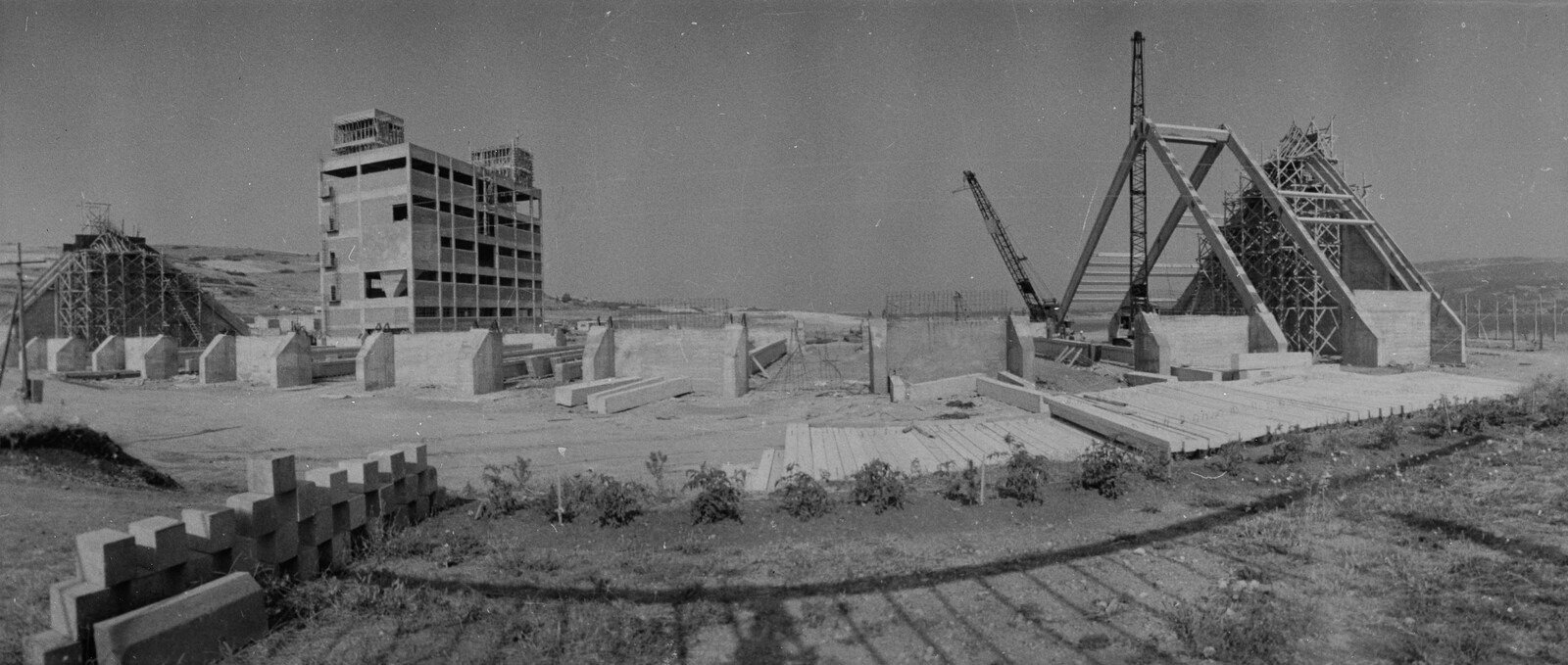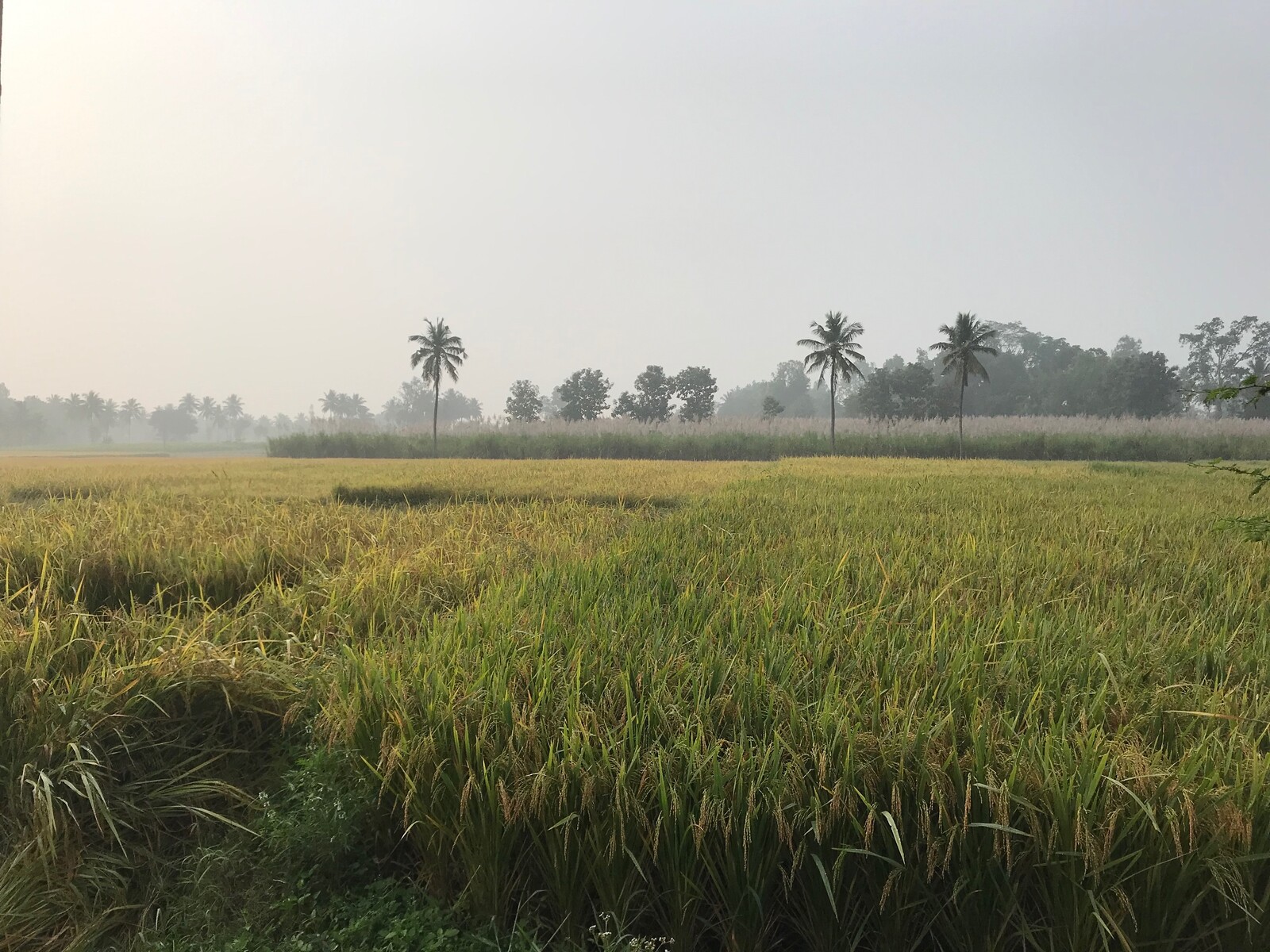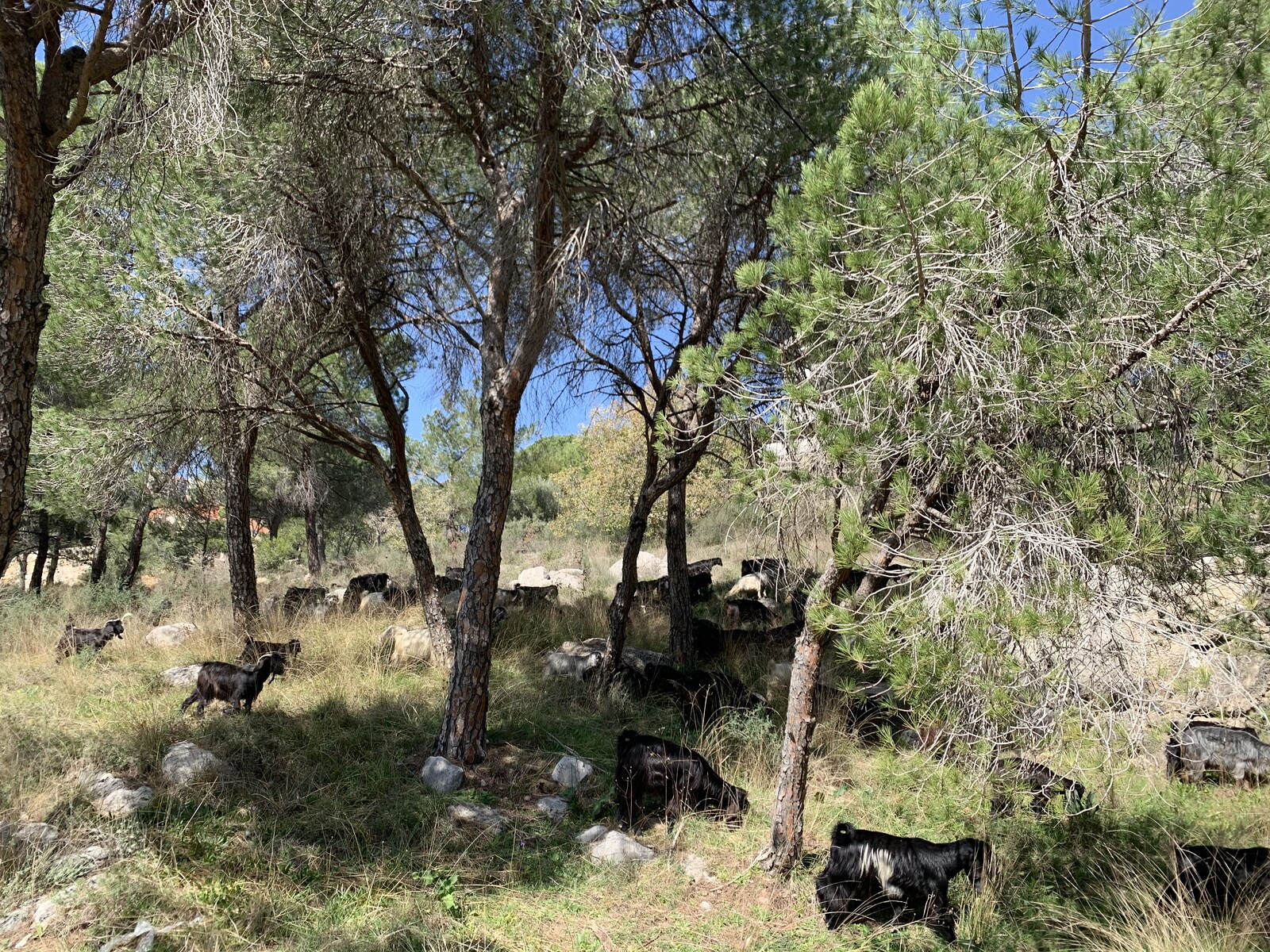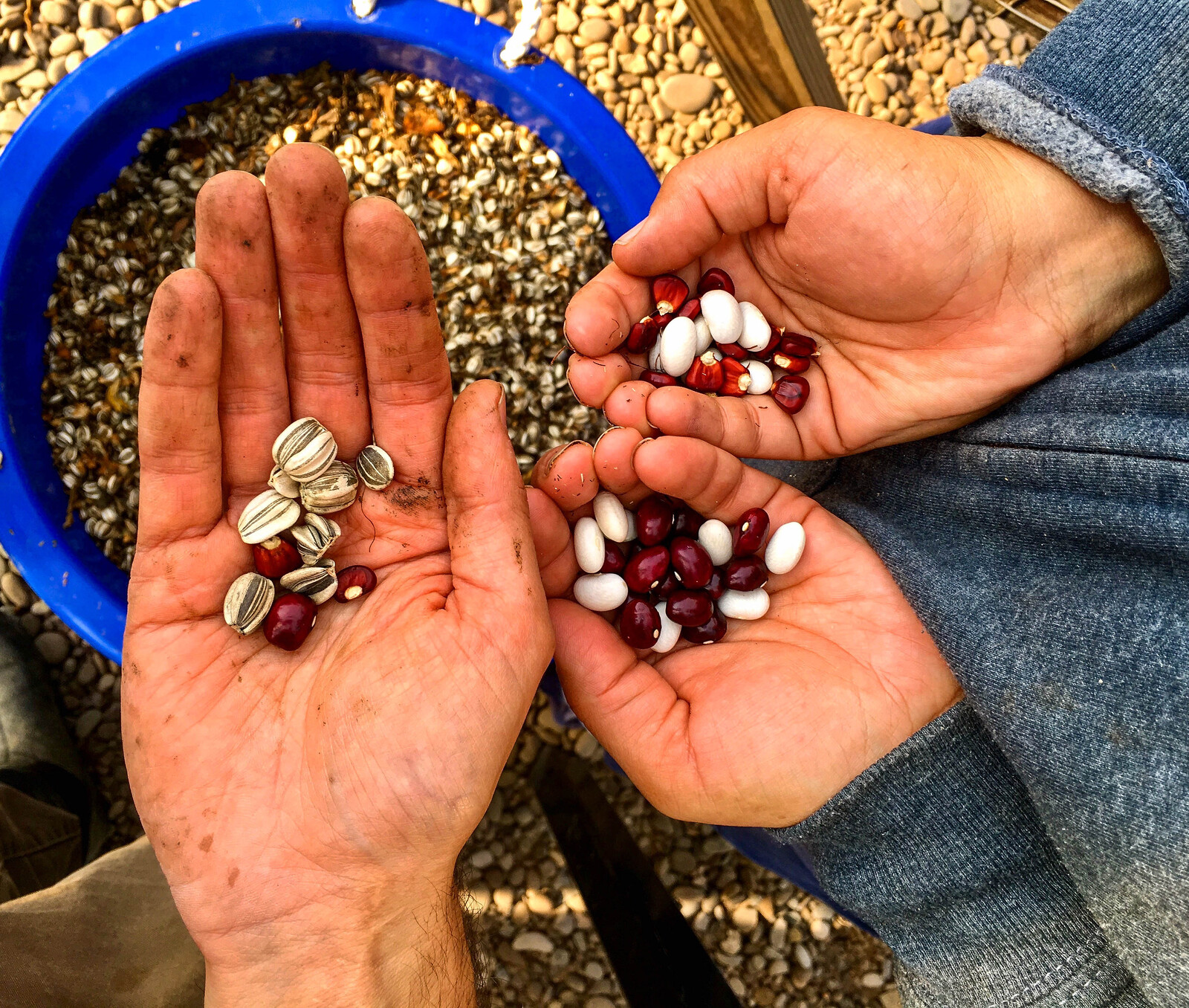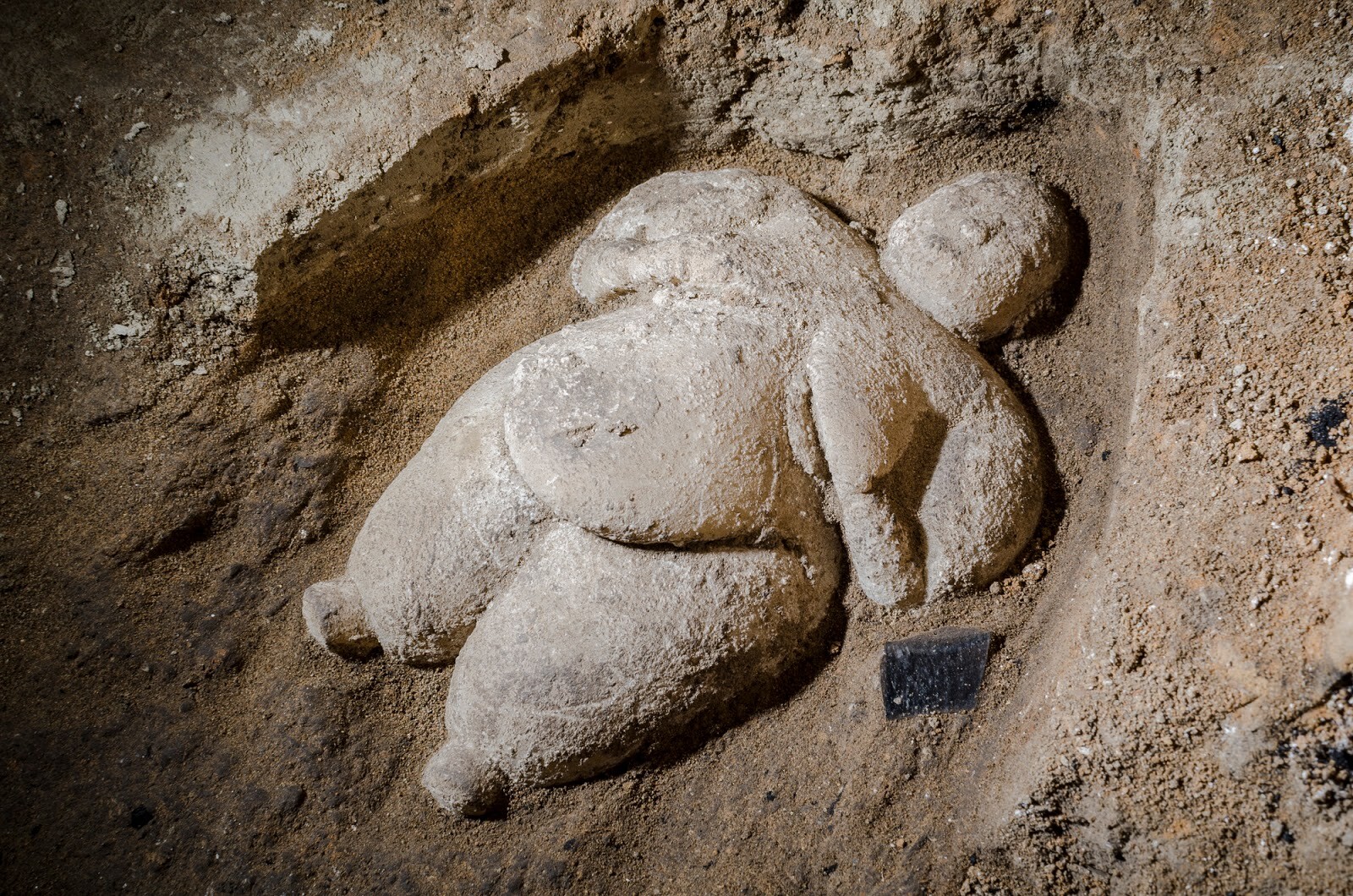Soil is the basis of life and a symbol of fertility. It has played a crucial role in history, giving birth to and fostered a variety of cultures and civilizations. Soil, furthermore, contributed to making and remaking nations. Humans are dependent on soil because it provides them with food for their sustenance. Throughout history, therefore, humans have made every effort to have fertile soil that contains adequate amounts of organic matter and nutrients to support and enhance plant growth. In this respect, soil fertility is indispensable for a thorough understanding of human history.
Farming practices and other human activities have modified soil properties for millennia. Human impact, or what has been lately called “anthropogenic impact” on soil has considerably increased and intensified over the past century. Population growth and the need for increased crop production has increased the magnitude and speed of use of agrochemical fertilizers, pesticides, insecticides, and herbicides, which deteriorate soil quality. Since human nutrition and health are closely related soil fertility, production and use of chemical fertilizers have become an indispensable aspect of national and imperial agricultural planning programs.
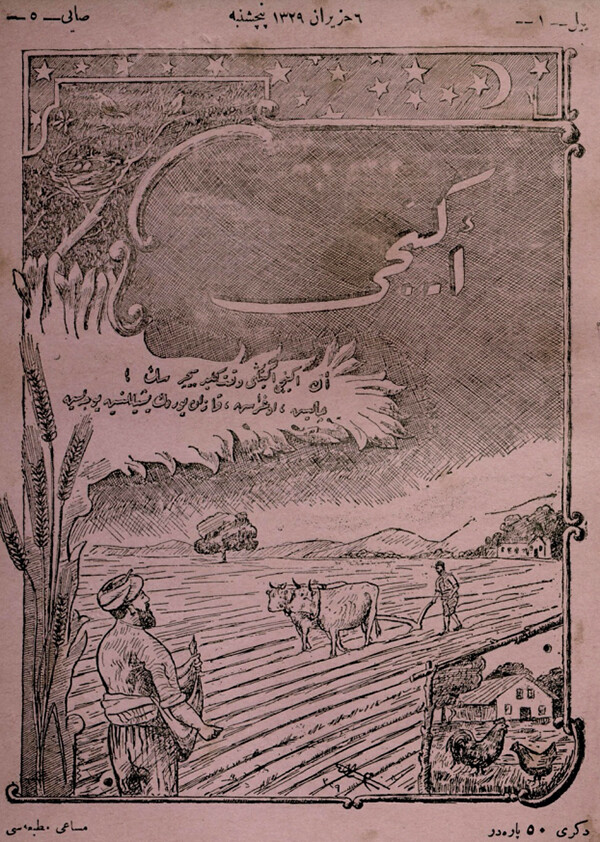

The cover of Ekinci Mecmuası 5, June 19, 1913. In the late Ottoman Empire, books, pamphlets, and articles propagated the agricultural benefits of chemical fertilizers.
Fertilizers in Ottoman Soil
The Ottoman Empire was an agrarian empire, where the majority of people made a living by tilling the soil. Ottoman people were aware that soil fertility was important for plants to grow and thrive, and they worked out ways and methods to increase it. In some regions, agriculture was made possible and enhanced by the natural processes of rivers and floodplains. Along the Nile in Egypt and the Tigris and Euphrates in the “Fertile Crescent,” for example, the Ottomans benefitted—as did their predecessors—from annual flooding that replenished nutrient-rich soil and sediments to floodplains. In most parts of the empire, however, they resorted to traditional methods and techniques to increase the quality and capacity of soil to produce optimum crop yield.
The first method was the use of legumes as spring crops to complement cereals as winter crops. When the winter harvest failed, peasants grew legumes to make up for the deficit. The adoption of cereal-legume crop rotation in Ottoman lands not only kept Ottoman people alive, but also stimulated soil life and fed plants with healthy nutrients, increasing their yield considerably. The second method was fallowing, in which arable land was plowed and tilled but left without sowing for one or more years. This allowed the soil to store moisture and organic matter for the crop season.1 In the Province of Konya in Central Anatolia, for example, only 8,000 of an arable 48,000 square kilometers were under cultivation in 1912, and in the highlands of northeastern Anatolia, where population was low and land was plenty, fallow periods of up to five years were common.2
In woodlands, such as Kastamonu and Bolu in northern Anatolia, on the other hand, slash-and-burn cultivation was practiced every twenty to twenty-five years to increase the fertility of soil. The chopped woodland, or “slash,” was left to dry in the summer and turn into “biomass,” and then burned, turning into a nutrient-rich layer of ash.3 Finally, soil fertility was also maintained through applications of organic matter. Dung from livestock such as cows, sheep, and goats allowed nutrients to enter the soil and enrich it. Nevertheless, in most parts of Ottoman Anatolia and the Middle East, decomposition of manure was slow because of low rainfall and long dry periods. Camel, oxen, buffalo, sheep, and goat roaming in the Anatolian countryside played vital roles as beasts of burden, as draught animals, and as livestock, but their dung was mostly used as fuel, not as fertilizer.4 Only in western Anatolia, farmers practiced using animal dung as organic fertilizer.5 Even more limited was other organic matter such as green manure, compost, and pulp. Difficulties in gathering, storing, and dressing animal dung and green manure further restricted the use of organic matter.6
In the late-nineteenth and early-twentieth century, agricultural production in the Ottoman Empire rose due to a number of factors, including large and small-scale irrigation projects, agricultural credits, and increased use of modern agricultural tools. This is also when chemical fertilizers were first available. Agricultural experts trained in schools promoted agricultural technologies, chemical fertilizers, and new types of seeds in newly established model fields and farms in Aleppo, Konya, Adana, Ankara, and a number of other regions.7 Books, pamphlets, and articles by agricultural engineers, chemists, and agriculturalists promoting the importance of chemical fertilizers to plant nutrition were published.8 On June 19, 1913, for example, the magazine Ekinci Mecmuası published an article titled “Fosforlu Gübreler” (“Phosphorus Fertilizers”) discussing the need for phosphate fertilizers and the benefits of potash.9 In another article from around the same time in the magazine Toprak Mecmuası, farmers were advised against fallowing the land, instead promoting the use of agrochemical fertilizers.10
Nation, Soil, and Modernization (1923–1950)
In 1923, the Turkish Republic was born out of the disintegration of the Ottoman Empire. Early Republican reformers, policymakers, agricultural experts, and technicians, under the leadership of Mustafa Kemal (later known as Atatürk) attempted to modernize agricultural techniques and methods in the young Republic. Even though agriculture was the source of livelihood for the majority of the population, the Turkish government still at the time imported staple food products to feed its people. Agricultural productivity and land fertility were low because of the limited use of both organic and chemical fertilizers. Early Republican administrators encouraged widespread use of animal manure as organic matter, promoting the construction of manure pits (gübrelik) in villages and hamlets and subsidizing the construction of animal manure handling facilities.
On top of this, early Republican administrators sought ways to encourage the use of chemical fertilizers. Agricultural exhibitions and fairs organized in the 1920s and early 1930s became venues where Turkish agriculturalists and cultivators could be introduced to and learn from foreign developments and experts. The International Agricultural Exhibition of Adana in 1924, the first of such exhibitions, was attended by forty-six companies from eleven countries, and it remained open to visitors for more than a year. Thousands of agriculturalists and farmers visited the exhibition to get more information about new agricultural machinery and tools, as well as chemical fertilizers. Similar exhibitions and fairs in the following years, like the International Ankara Agricultural Technologies Exhibition of May 1931 and the September 9 Local Exhibition (9 Eylül Mahalli Sergisi) of September 1927, displayed further chemical fertilizers, pesticides, and insecticides to the public.11
Soon after this, in the 1930s, Turkish and foreign experts made the first soil analyses in Turkey and wrote books and technical reports analyzing soil quality. In studies such as Memleketimizde Ümüs Meselesi (The Hummus Problem in Our Country), written by professors V. Horn and Halid Evliyar, and Kimyevî Gübre Raporu (Chemical Fertilizer Report), prepared by the Ministry of Agriculture, experts made a call for the establishment of a national chemical fertilizer industry. Newspapers and magazines echoed these calls.12 Despite all these efforts, however, the use of chemical fertilizers in Early Republican Turkey was limited. Between 1930 and 1934, fertilizer consumption in Turkey was fifteen grams per hectare of arable land, while in Japan it was 76.2 kilograms, 70.7 kilograms in Germany, 33.3 kilograms in France, and 10.7 kilograms in Italy.13
The young Republic had neither the capital nor technical expertise to develop a national fertilizer industry. In these years, therefore, the government satisfied the entire demand for chemical fertilizers through foreign imports. The most concrete effort to establish a national industry came during the First Village and Agriculture Development Congress, where the Ministry of Agriculture’s Chemical Fertilizer Report was released. The congress prescribed a course action to address the shortage of different types of agrochemical fertilizers in Turkey and the necessity of developing a national chemical fertilizer industry: 1) A nitrogen factory similar to Haber-Bosch needs to be founded; 2) A superphosphate factory needs to be founded; and 3) Potash supply needs to be covered through imports.14 A framework agreement on the proposed construction of a chemical fertilizer factory in Turkey was signed between the Turkish government and the German IG-Farbenindustrie (later to be called Badische Anilin und Soda Fabrik, or BASF) on June 27, 1939, but was put on hold due to the Second World War.
From Chemical Fertilizers to Biofertilizers (1950–2000s)
Despite the efforts to modernize the Turkish agriculture, farming practices in Turkey in the aftermath of the Second World War was not much different than it had been in Ottoman times. The use of chemical fertilizers was still very limited, and domestic demand was supplied entirely through imports. The tractor was almost unknown and the wooden plow remained the main agricultural tool.15 In 1948, in his famous report on Turkey, Max Weston Thornburg observed:
Here [Central Anatolia], as in most other Turkish agricultural regions, the farmers use no fertilizer of any description. They could not buy prepared fertilizer if they wanted it, and dung is burned as fuel. Since the land is sparsely settled, however, they usually move their planted fields about, leaving fallow land to accumulate moisture.16
Thornburg saw the reluctance of Turkish farmers to use fertilizers of any kind as a part of a larger structural problem in Turkish agriculture. He suggested that fertilizer must be accompanied through crop improvement, and noted that “the need of fertilizer in Turkish agriculture is not yet of pressing importance—although some day it may be—because there is no way of distributing a larger agricultural product.”17


Potash advertisement, Türkmay TAŞ, 1960s. Source: Mehmet Altun, Toprağa Düşen Bereket (Istanbul: Toros Tarım Sanayi ve Ticaret A.Ş., 2011), 13.
The area of land under cultivation in Turkey rapidly multiplied with the introduction of the tractor. In 1940, there were 1,000 tractors and 87,000 hectares of land tilled by them. In 1965, tractors numbered 54,668 and their associated farmlands increased to 4,100,000 hectares. More land required not only more tractors, but also chemical fertilizers: their use increased from 0.14 kilograms per hectare, in 1948 to 1951, to 8.6 kilograms in 1965. By the mid-1960s, chemical fertilizers were used in 20% of all cultivated lands in the country, but still, most of these lands were located in river valleys in western and southern Anatolia.18
The Second World War brought plans to develop a national chemical fertilizer industry to a standstill. However, in 1952, the Turkish government resumed the work and founded the GÜBRETAŞ (Gübre Fabrikaları Türk Anonim Şirketi, or Fertilizer Factories Turkish Joint Stock Company). In 1954, the consortium built the country’s first chemical fertilizer factory in İskenderun, with an annual production capacity of 100,000 tons of normal superphosphate.19 In 1961, the consortium opened a second factory in İzmit. In the meantime, a nitrogenous manure factory was established in Kütahya in 1954.20
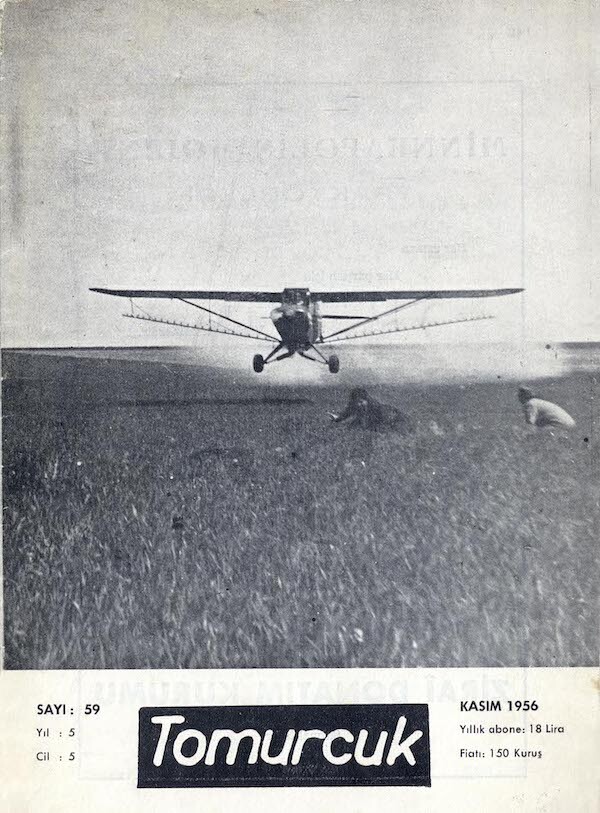

Weed control in Harran Plain. Source: Tomurcuk Aylık Ziraat Dergisi 59, 1956.
The Turkish Government launched its first Five Year Economic Development Plan in 1963. From this date forward, fertilizer production and consumption was included in five-year plans in the country, even up until today. In the 1963–1967 term, fertilizer consumption quintupled, growing from 300,000 tons to 1.5 million tons. This figure increased even further to 2.1 million tons in 1973, and 3.7 million tons in 1975. Chemical fertilizer consumption skyrocketed from 1976 to 1979, increasing from 5.9 million tons in 1976 to 6.6 million tons in 1977 and eventually 7.7 million tons in 1979.21 While the rate of growth in the use of chemical fertilizer slowed after that (today, approximately ten million tons are used), agricultural practice had been permanently altered.22 In 1973, chemical fertilizers were used in 32% of cultivable land in Turkey; only four years later, it was 60%. In this period, some crops such as tea, citrus fruits, and sugar beet relied entirely on chemical fertilizers.23 Today, chemical fertilizers are applied in 98% of agricultural lands in Turkey.[footnote Onuncu Kalkınma Planı, 2014–2018. Bitkisel Üretim. Özel İhtisas Komisyonu Raporu (Ankara: T.C. Kalkınma Bakanlığı, 2014), 30.]
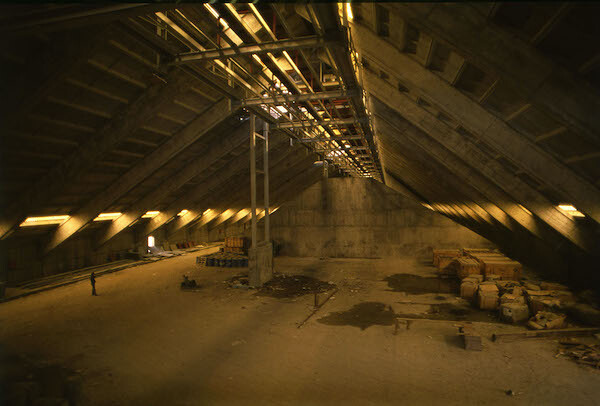

BAGFAŞ Fertilizer Factory in the Making, photographs taken during construction, 1972–1979. In 1978 the BAGFAŞ headquarters moved to Istanbul. The facility produces various composite fertilizers with ammonium sulfate and DAP fertilizer, and supplies ammonium nitrate, urea and calcium ammonium nitrate (CAN) fertilizer.
In the late 1960s and 1970s, Turkey built up its national chemical fertilizer industry. State-owned and private factories opened in Kütahya, Samsun, Elazığ, and Bandırma, which supplied two-thirds of all domestic chemical fertilizer consumption by 1980. With the establishment of these factories, domestic chemical fertilizer production not only increased but also became diversified, including ammonium sulphate, ammonium nitrate, triple superphosphate, diammonium phosphate, and compound fertilizer.24 The application of different types of chemical fertilizers, combined with the adoption of modern methods in seed improvement, mechanization, and irrigation allowed Turkish soil to become much more fertile in the 1980s. The crop yield per hectare increased significantly with increases in plant population.25
Conclusion
Chemical fertilizers were long used as beneficial soil amendments to increase the yield. Their aggravating impact on soil organic matter and fertility and other long-term effects on soil, air, and surface and underground waters were also long known; yet these have only largely become matters of concern in the past decades. The application of pesticides and chemical fertilizers, which kills microorganisms that bind soil together, is now understood to be a major cause of soil erosion, which in turn induces the loss of soil fertility. Similarly, soil acidification due to nitrogen-containing fertilizers has been the driving force behind the loss of agricultural productivity. The amount of potash and nitrogenous and phosphate fertilizers in Turkish soil has not decreased for the past two decades, yet the growth rate has, considerably. From 2009 to 2019, it fluctuated between ten and twelve million tons annually.26
Growing domestic and international demand for organic food, as well as concern about the potential harmful effects of chemical fertilizers on the environment and human health, has encouraged small farmers to engage with organic agriculture. The use of biochemical fertilizers only started in Turkey in the 1980s, but gained pace with the enactment of legislation and governmental subsidies in the 1990s. Increasing demand coming from markets in Europe has also played a role in the development of organic agriculture in Turkey. In Turkey, 90,000 hectares were managed organically in 2002. This figure quadrupled in ten years, increasing to almost 400,000 hectares.27 But even though the share of organic agricultural land and farms continue to grow in Turkey, the share of organic farming in the total agriculture area—which is currently less than 2%—lags well behind other countries.
Fallowing was prevalent in fertile agricultural regions with mild climates, such as western Anatolia, Thrace, and southeastern Europe. In areas with continental climates and lower population density, longer fallow periods were adopted.
See: Tevfik Güran, 19. Yüzyıl Osmanlı Tarımı (Istanbul: Eren, 1989), 89; İsmail Hüsrev Tokin, Türkiye Köy İktisadiyatı (Istanbul: İletişim, 1990, first published in 1934), 48.
See: Güran, 19. Yüzyıl Osmanlı Tarımı, 89; and Tokin, Türkiye Köy İktisadiyatı, 49.
Yahya Tezel, Cumhuriyet Döneminin İktisadi Tarihi (1923–1950) (Ankara: Yurt Yayınları, 1982), 376.
For example, in the province of Manisa, 2,000 to 3,000 tons of animal manure was used per square kilometer. See Tokin, Türkiye Köy İktisadiyati, 57.
Hüseyin Kazım, Ziraat Albümü (Dersaadet, Istanbul: Tanin Matbaası, 1914).
Donald Quataert, “Osmanlı İmparatorluğu’nda Tarımsal Gelişme,” Tanzimat’tan Cumhuriyete Türkiye Ansiklopedisi 6 (Istanbul: İletişim, 1985), 1562.
Nikola Kiryako, Patates Ziraati ve Kimyevî Gübre (Dersaadet, Istanbul: Matbaa-ı Hayriye ve Şürekâsı, 1915, first published in 1331).
“Fosforlu Gübreler,” Ekinci Mecmuası 5 (June 1913): 35–37.
“Anız Üzerine Yeşil Gübre,” Toprak Mecmuası 9 (July 1913): 148–152.
Aysu Özçaylak, Cumhuriyet Dönemi Ekonomisinde Yerli Malı Politikaları ve Uygulamaları (Ankara: Atatürk Araştırma Merkezi Yayınları, 2017), 128.
Kerim Ömer, “Topraklarımızın gübre ihtiyacı,” Cumhuriyet, October 4, 1930.
Kimyevi Gübre Raporu (Ankara: T.C. Ziraat Vekâleti Neşriyatı, 1938), 11.
İrfan Elmacı, “Cumhuriyet Dönemi Teknoloji Tarihi (İlaç, Petroli Kimyevî Gübre Teknolojileri)” (PhD. diss., Ankara University, 2013), 284–289.
Doğan Avcıoğlu, Türkiye’nin Düzeni (Istanbul: Kırmızı Kedi, 2013, first published in 1968), 421.
Max Weston Thornburg, Turkey: An Economic Appraisal, (New York: Twentieth Century Fund, 1949), 68.
Ibid., 278.
Avcıoğlu, Türkiye’nin Düzeni, 446.
Elmacı, “Cumhuriyet Dönemi Teknoloji Tarihi,” 306–309.
Ibid., 309–322.
5. Beş Yıllık Kalkınma Planı. Gübre ve Gübre Hammaddeleri Özel İhtisas Komisyonu Raporu (Ankara: T.C. Başbakanlık Devlet Planlama Teşkilatı, 1987), 119.
Mehmet Altun, Toprağa Düşen Bereket (Istanbul: Toros Tarım Sanayi ve Ticaret A.Ş., 2011), 19.
See: Kimya Sektör Araştırması Ek Araştırmalar: Kimya-Tarım İlişkileri Alt Raporu (Istanbul: Türkiye Sınai Kalkınma Bankası, 1980), 27–29; 5. Beş Yıllık Kalkınma Planı, 122–125.
Diammonium phosphate was produced in Samsun for the first time in the 1970s.
For a detailed analysis, see A. İlkin Baray and Temel Ergun, 1980 Sonrası Dönemde Türkiye’nin Yapısında Ortaya Çıkan Değişmeler (Istanbul: Friedrich Ebert Stiftung, 1990), 19–32.
TUİK Tarımsal Gübre İstatistikleri, ➝.
T.C. Tarım ve Orman Bakanlığı, 2002-2018 Yılları Organik Tarım İstatistikleri, ➝.
Exhausted is a collaboration between SALT and e-flux Architecture, supported by L’internationale and the Prince Claus Fund.
